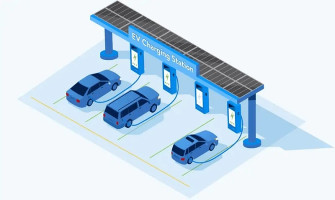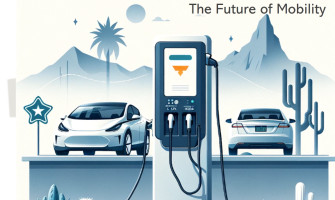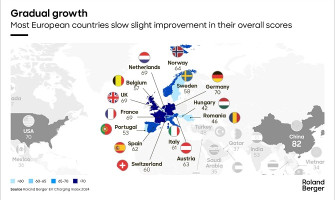The Evolving Landscape of EV Charger Stations: A Comprehensive Guide

The Evolving Landscape of EV Charger Stations: A Comprehensive Guide
In recent years, the Electric Vehicle (EV)
industry has witnessed remarkable growth and innovation, driven by the global
shift towards sustainable transportation solutions. One of the crucial
components supporting this transition is the EV charger station industry. As
more consumers adopt electric vehicles, the demand for reliable and accessible
charging infrastructure continues to escalate. Explore the EV charger station
industry's dynamics, including current trends, challenges, and future prospects
in this guide.
Understanding
the EV Charger Station Industry
EV charger stations are infrastructure
facilities designed to recharge electric vehicles' batteries. They play a
pivotal role in enabling EV owners to conveniently charge their vehicles,
thereby extending the range and usability of electric cars. The EV charger
station industry involves manufacturers, service providers, governments, and
utility companies, all contributing to infrastructure growth.
Key Trends
Shaping the EV Charger Station Industry
Expansion of Charging Networks:
Global charging networks are expanding significantly to meet EV charging
demand. Leaders like Tesla, ChargePoint, and EVgo deploy high-speed stations in
key locations.
Technological Advancements:
Innovations like fast chargers, wireless charging, and smart systems are
improving EV charging efficiency and convenience. Fast chargers, capable of
delivering rapid charging speeds, are becoming more prevalent, reducing
charging times significantly.
Integration with Renewable Energy: Many EV charger stations are now integrated with renewable energy
sources such as solar and wind power. This trend aligns with the sustainability
goals of the EV industry, promoting cleaner energy usage for transportation.
Partnerships and Collaborations: Collaboration among automakers, charging operators, and energy firms
drives interoperable charging solutions and seamless user experiences. These
partnerships aim to address infrastructure challenges and promote EV adoption
on a broader scale.
Challenges
and Opportunities
Despite the positive momentum, the EV charger
station industry faces several challenges that need to be addressed for
sustained growth:
Infrastructure Investment: Building a robust charging infrastructure requires substantial
investment in equipment, installation, and grid upgrades. Public-private
partnerships and government incentives play a crucial role in accelerating
infrastructure development.
Charging Standardization: Standardizing charging protocols and connector types is essential to ensure
compatibility across different EV models and charging networks. Industry
stakeholders are actively working on interoperability standards like CCS
(Combined Charging System) and CHAdeMO.
Grid Capacity and Demand Management: Managing the impact of high-power chargers on the electricity grid is
a critical consideration. Smart charging solutions, demand response programs,
and grid-balancing technologies can mitigate grid constraints and optimize
energy use.
User Experience and Accessibility: Enhancing user experience at charging stations, including payment
systems and app interfaces, is crucial for adoption and satisfaction.
Future
Outlook and Opportunities for Growth
The EV charger station industry is poised for
significant growth and innovation in the coming years. Key factors driving this
growth include:
Government Support and Regulations: Governments worldwide are implementing policies to promote EV adoption
and expand charging infrastructure. Initiatives such as funding grants, tax
incentives, and emissions regulations are creating a favorable environment for
industry players.
Technology Advancements: Continued advancements in charging technologies, including ultra-fast
chargers, bidirectional charging for vehicle-to-grid (V2G) capabilities, and
energy storage integration, will unlock new possibilities and enhance the
overall EV ecosystem.
Market Expansion: As electric vehicles become more affordable and mainstream, the demand
for charging infrastructure will escalate, leading to market expansion in
residential, commercial, and public charging segments.
Sustainability Initiatives: The integration of renewable energy sources and sustainable practices
within the charging infrastructure will align with environmental goals and
support the transition to a low-carbon transportation system.
In conclusion, the EV charger station industry
is undergoing rapid transformation driven by technological innovation,
regulatory support, and market demand. Stakeholders across the EV ecosystem
must collaborate, invest strategically, and prioritize user experience to
capitalize on the immense opportunities presented by the electrification of
transportation. By embracing sustainable practices and leveraging cutting-edge
technologies, the industry can pave the way for a cleaner, greener future of
mobility.
For more information and insights on the EV charger station industry,
stay updated with our blog and follow the latest trends shaping the sustainable
transportation landscape.





Leave a Comment